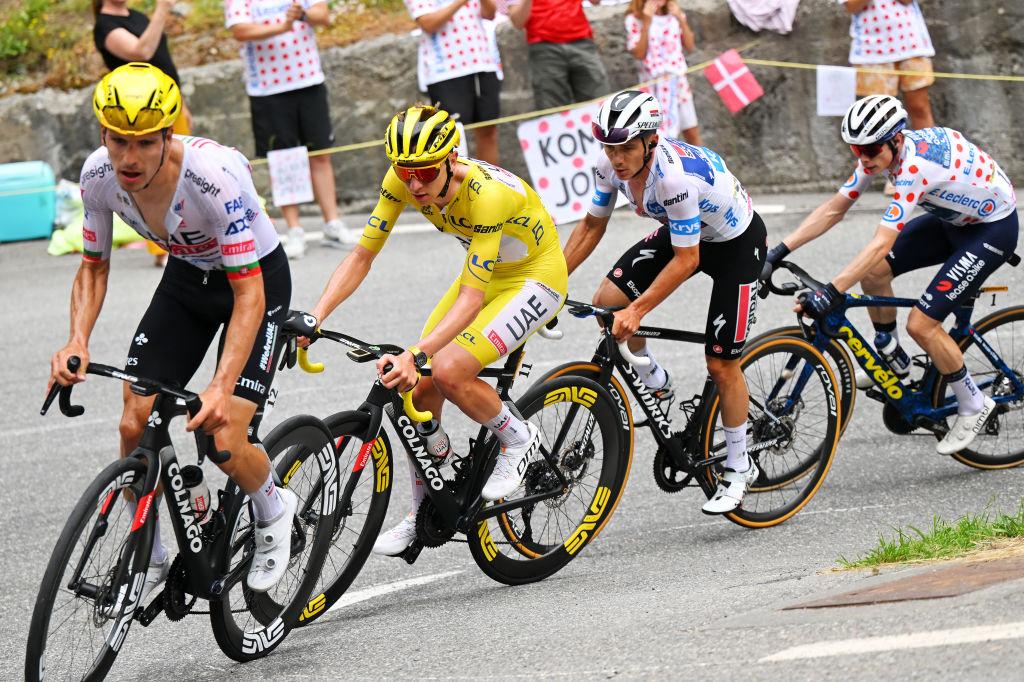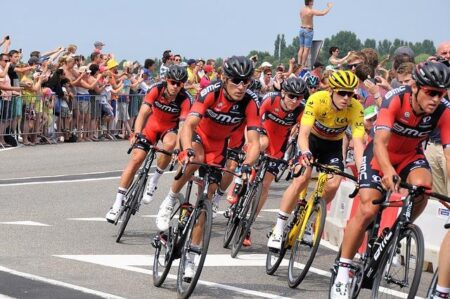In the world of sports documentaries, few series capture the sheer intensity and drama of competitive cycling quite like Netflix’s “Tour de France.” As the saga unfolds, viewers are offered a unique glimpse into not just the physical exertion required, but the personal stories and intricate dynamics that define the race. Season three of the series has recently premiered, and after binge-watching all episodes, I found myself both captivated and surprised by several key aspects that interweave within this iconic event. From unexpected rivalries to behind-the-scenes strategies, here are six revelations that stood out during my viewing experience and shed new light on the enduring allure of the Tour de France.
Unveiling the Unseen Drama Behind the Races
The intense competition of the Tour de France is often celebrated for its speed and stamina, but the Netflix series pulls back the curtain to showcase the intricacies behind the race. Viewers are treated to an intimate portrayal of the cyclists’ experiences, highlighting their mental battles, both on and off the road. In one compelling segment, we see riders grappling with fear of injury and the relentless pressure from their teams and sponsors. The series effectively captures the emotional rollercoaster, revealing that each victory is steeped in sacrifice and determination that often goes unnoticed amidst the hype of the race.
Moreover, the documentary emphasizes the collaborative spirit among teams, portraying dynamic relationships and strategic discussions. It sheds light on how support crew members play a vital role in ensuring the success of the riders. Viewers learn about the tactical decisions made in the heat of competition, illustrating the critical nature of teamwork. The balance of individual talent and group effort forms a fascinating contrast to the perception of cycling as a solo sport. This blend of personal stories and team dynamics raises questions about the true essence of triumph in such a monumental event.
Lessons in Team Dynamics and Leadership from the Peloton
The Peloton displayed a remarkable interplay of individual prowess and collective strategy throughout the Tour de France, highlighting the essence of effective team dynamics. Each rider, while chasing personal glory, understood the critical role they played within the group. It wasn’t just about finishing strong; it was about supporting one another through the rigors of the race. As teammates communicated both verbally and through body language, they exemplified how synchronization can lead to success. Instances of riders selflessly taking on more wind resistance to shield their peers or sacrificing their own chance at victory for strategic advantages illustrated the profound impact of unity in a high-stakes environment.
Leadership was another focal point that emerged emphatically throughout the season. The balance of responsibility among various team members revealed that leadership can be fluid rather than fixed. Captains made decisions based on the race’s dynamics, allowing other members to step into leadership roles when necessary. This adaptability signified a deeper understanding of shared responsibility, wherein good leaders empower their teammates. The following table encapsulates key leadership traits discovered among the cyclists:
| Leadership Trait | Description |
|---|---|
| Adaptability | Ability to adjust strategies based on circumstances. |
| Empowerment | Encouraging peers to take initiative. |
| Communication | Clear and continuous dialogue among team members. |
| Self-Sacrifice | Prioritizing team success over personal victory. |
The Impact of Technology on Modern Cycling Controversies
The integration of technology in cycling has sparked numerous debates within the community, particularly highlighted in the recent season of the Tour de France series. The use of advanced gear systems, aerodynamic enhancements, and data analytics tools has transformed how cyclists train and compete. However, this evolution isn’t without its controversies. Critics argue that these technological advancements create an uneven playing field, favoring teams with larger budgets who can afford the latest equipment. As a result, the spirit of competition, traditionally rooted in the cyclists’ physical prowess and tactical skills, is perceived to be overshadowed by the tech-driven race to the finish line.
Furthermore, the rise of digital monitoring and performance tracking has raised ethical concerns regarding athlete privacy and data security. Teams now rely on intricate software to analyze every aspect of a cyclist’s performance, leading to discussions about the extent to which such data should be shared-both within the team and with sponsors. The potential for manipulation also lingers, as the line blurs between optimizing performance and enhancing it artificially. As technology continues to evolve, the cycling community faces the challenge of balancing innovation with ethical considerations in sportsmanship.
The Way Forward
In conclusion, Netflix’s third season of the Tour de France series not only captivates with its stunning visuals and gripping narratives but also offers surprising insights into the world of competitive cycling. From unexpected rivalries to the untold physical and emotional toll on riders, the series paints a multifaceted picture of an event that transcends mere sport. As viewers continue to engage with the personal stories and challenges faced by the athletes, it becomes increasingly clear that the Tour de France is as much about human perseverance as it is about cycling prowess. As we eagerly await future seasons, this edition leaves us with a deeper understanding of the sport and its athletes, challenging our preconceived notions and revealing the layers of drama behind every race.











